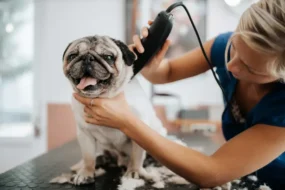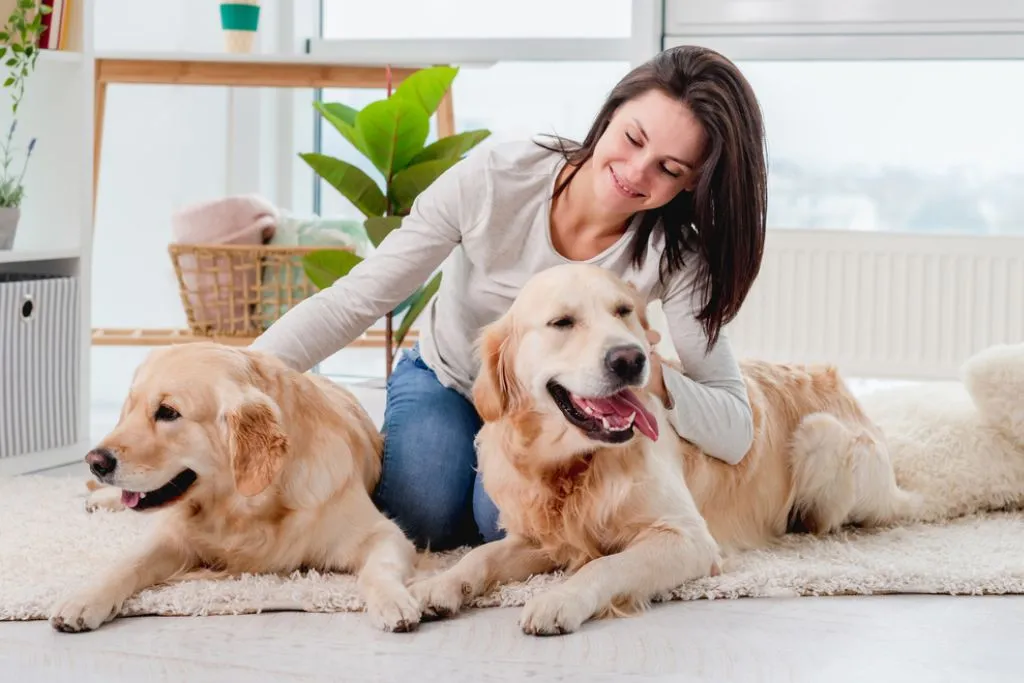
Creating a Pet-Friendly Home goes beyond simple aesthetics and conveniences. It’s about crafting an environment that not only ensures the safety and comfort of your pets but also supports their physical and mental well-being. This involves focusing on three core essentials: safety, comfort, and enrichment.
- Safety: The Foundation of a Pet-Friendly Home
- Comfort: A Space for Rest and Relaxation
- Enrichment: Stimulating Body and Mind
- How Can You Pet-Proof Your Living Spaces?
- General Tips for Pet-Proofing
- What Are the Best Flooring Options for Pets?
- How Can You Ensure Your Pet Has a Comfortable Resting Area?
- What Outdoor Spaces Are Safe and Enjoyable for Pets?
- How Can You Provide Enrichment for Your Indoor Pets?
- What Are the Best Practices for Maintaining a Clean and Healthy Home?
- How Can You Integrate Pet Needs into Your Home Decor?
- Choose Pet-Friendly Fabrics and Materials
- Create a Stylish Cat Corner
- Incorporate Wall-Mounted Shelves and Perches
- Use Decorative Storage to Hide Cat Essentials
- Integrate Scratch-Resistant Surfaces Creatively
- Decorative Yet Functional Cat Doors
Safety: The Foundation of a Pet-Friendly Home
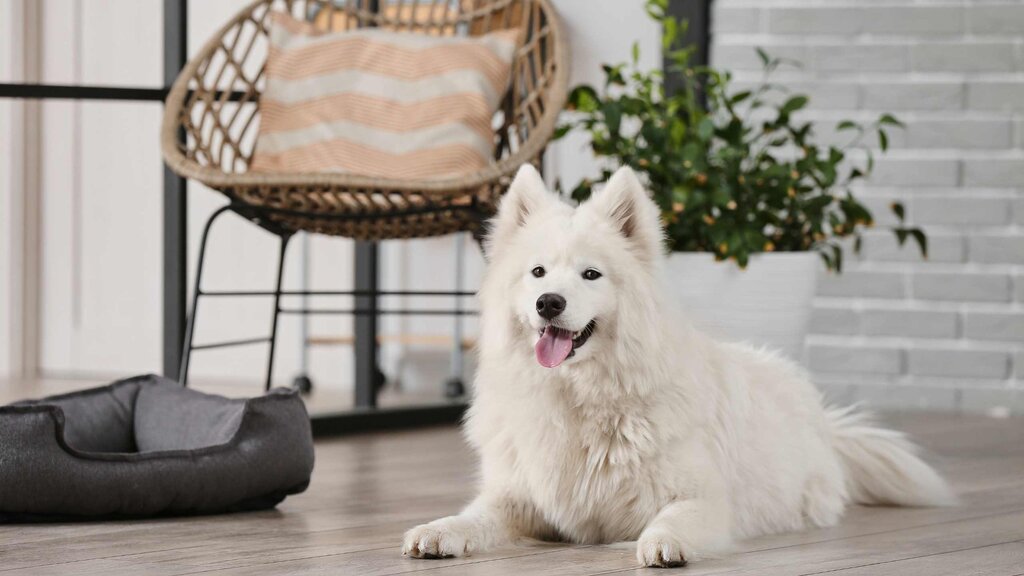
The first and foremost priority in creating a pet-friendly home is ensuring the safety of your furry family members. This means eliminating or securing potential hazards that could harm your pets. From toxic plants and household chemicals to small, swallowable objects and open windows, each aspect of your home must be scrutinized and made safe for all inhabitants.
“Safety doesn’t mean sacrificing style or convenience,” says Darina, the owner of MeoWoff cattery .”It’s about being mindful of the everyday items and situations that could pose risks to our pets and taking proactive steps to mitigate those risks.”
Comfort: A Space for Rest and Relaxation
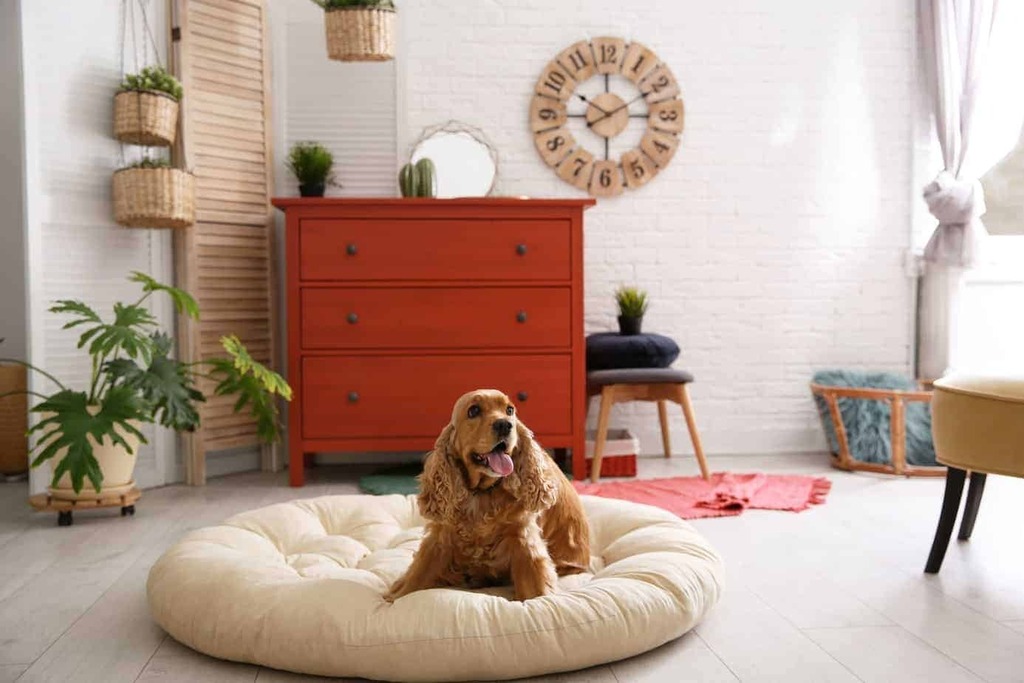
A pet-friendly home should also be a haven of comfort for your pets. This includes providing them with their own designated spaces to retreat and relax, such as cozy beds, quiet corners, and safe hiding spots. The aim is to create a stress-free environment that caters to their instinctual needs for rest and security.
Comfort also extends to the physical environment, including maintaining a comfortable indoor temperature and ensuring that there are plenty of soft, supportive surfaces for lounging and sleeping.
Enrichment: Stimulating Body and Mind

Finally, a truly pet-friendly home provides ample opportunities for pets to engage in natural behaviors and activities that stimulate their minds and bodies. This includes interactive toys, scratching posts, climbing structures, and access to windows for viewing the outdoors. For pets, enrichment can prevent boredom and anxiety, promoting a healthier and more balanced life.
By focusing on these three essentials—safety, comfort, and enrichment—pet owners can create a living space that not only meets the physical needs of their pets but also supports their mental and emotional well-being. This holistic approach to pet-friendly living ensures a harmonious and joyful coexistence for all members of the household.
How Can You Pet-Proof Your Living Spaces?
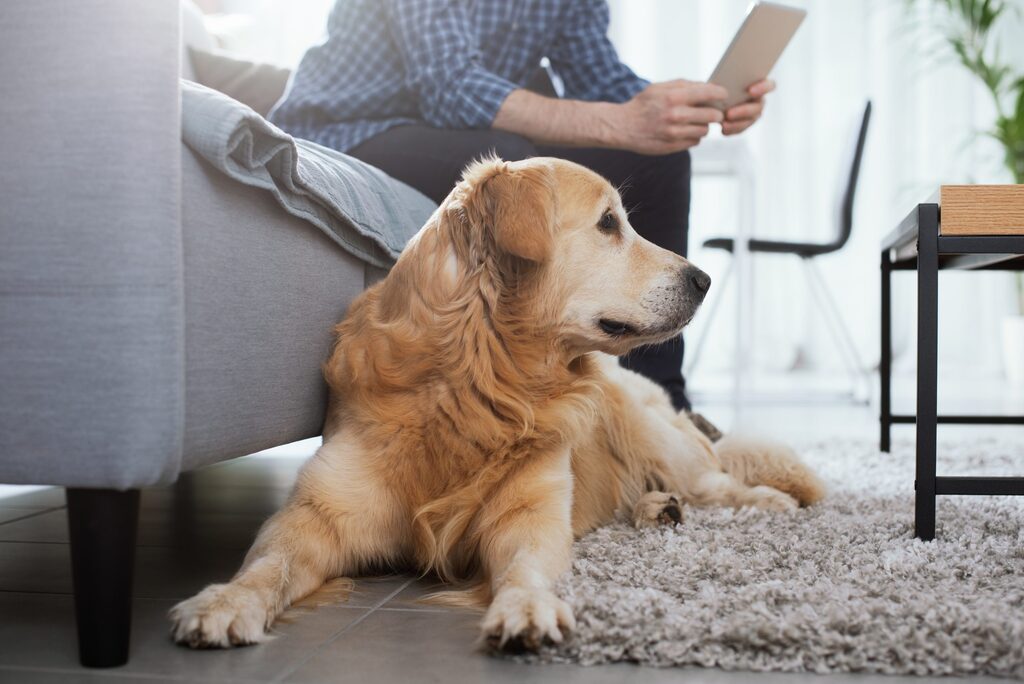
Pet-proofing your living spaces is a critical step in creating a Pet-Friendly Home. It involves a meticulous examination of your home environment to identify and mitigate potential hazards that could harm your pets. Here’s how you can ensure each room is safe and secure for your furry family members:
Living Room
The living room is a central hub of activity, making it essential to secure loose wires, protect pets from heavy objects that might tip over, and ensure all small items and toxic substances are out of reach. Consider using cord protectors for electrical wires and ensuring your furniture is stable to prevent any accidents.
Kitchen
Kitchens hold a variety of hazards, from toxic foods to accessible trash cans and sharp utensils. Implement child-proof latches on cabinets and drawers to prevent curious paws from prying them open. Keep all food stored away securely and ensure trash is contained in a pet-proof bin. Additionally, be cautious with hot surfaces and appliances; pets can be unaware of the dangers these pose.
Bathroom
Bathrooms are filled with potential dangers, including medications, cleaning supplies, and small personal care items. Keep all hazardous materials in high cabinets or use child-proof locks. Ensure the toilet lid is always closed to prevent drowning risks or drinking of harmful cleaning chemicals. Also, keep appliances like hair dryers and straighteners unplugged and out of reach when not in use.
Bedrooms
Bedrooms may seem safe, but small items like jewelry, coins, and medications can pose choking hazards. Ensure windows have secure screens to prevent falls, and keep any toxic plants out of reach. If you use essential oils or diffusers, make sure they are pet-safe, as some oils can be toxic to animals.
General Tips for Pet-Proofing
- Secure Trash Cans: Use bins with locking lids or store them in locked cabinets to prevent pets from rummaging through garbage and potentially ingesting dangerous items.
- Store Hazardous Substances Safely: All cleaning products, medications, and chemicals should be stored in high cabinets or locked drawers.
- Remove Toxic Plants: Many common houseplants are toxic to pets. Research and remove any that could pose a risk.
- Cover Open Vents: Ensure all vents and ducts are covered to prevent small pets from getting stuck or lost within them.
- Furniture and Window Treatments: Opt for heavy, stable furniture that can’t easily tip over. Secure blinds and curtain cords out of reach to avoid entanglement risks.
What Are the Best Flooring Options for Pets?

When it comes to flooring, pet owners should consider durability, ease of cleaning, and comfort for their pets. Options include:
- Hardwood: Durable but prone to scratches.
- Carpet: Soft but can harbor odors and stains.
- Tile: Easy to clean but hard and cold.
- Laminate: Scratch-resistant and easy to clean, but slippery for pets.
Recommendations lean towards tile and laminate for their pet-friendly and easy-to-clean nature.
How Can You Ensure Your Pet Has a Comfortable Resting Area?
Designating specific zones for your pet to rest and relax is essential for their comfort. This could include cozy pet beds in quiet corners, crates for secure sleeping, or even special furniture designed with pets in mind. The goal is to create a space where your pet feels safe and comfortable.
What Outdoor Spaces Are Safe and Enjoyable for Pets?

For pet owners with outdoor spaces, creating a pet-friendly yard or balcony involves choosing safe plants, using pet-safe landscaping materials, and securing the perimeter to prevent escapes. It’s also important to be aware of outdoor hazards like toxic plants, pesticides, and fertilizers that can harm your pet.
How Can You Provide Enrichment for Your Indoor Pets?
Enrichment is key to keeping your indoor pets happy and healthy. This can include:
- Interactive Toys: Toys that mimic prey, such as laser pointers and feather wands, can provide hours of entertainment and exercise. Rotating toys regularly can keep your cat’s interest piqued.
- Scratching Posts and Climbing Structures: Cats have a natural urge to scratch and climb. Providing multiple scratching surfaces and climbing trees or shelves can help satisfy these instincts and keep your cat from turning to your furniture instead.
- Window Perches: Cats love to observe the world from a safe vantage point. A window perch or a cozy spot near a sunny window can provide your feline friend with hours of entertainment watching birds and other wildlife.
What Are the Best Practices for Maintaining a Clean and Healthy Home?
Maintaining a clean home is crucial when living with pets. This includes managing pet hair with regular grooming and vacuuming, using pet-safe cleaning products, and ensuring the home is ventilated to minimize odors. Regular pet grooming is also vital to reduce shedding and keep your pet healthy.
How Can You Integrate Pet Needs into Your Home Decor?
Integrating pet needs into your home décor, especially for cats, can be a delightful challenge that combines functionality with aesthetics. Cats are known for their love of climbing, scratching, and lounging in cozy spots. Fortunately, there are creative ways to meet these needs without sacrificing the style and cohesion of your home’s interior design.
Choose Pet-Friendly Fabrics and Materials
When selecting furniture, opt for materials that are durable and easy to clean. Microfiber, for example, is an excellent choice for pet owners because it’s resistant to scratches and simple to maintain. Leather is another good option, as it can withstand a fair amount of wear and tear, though it’s not entirely scratch-proof. Avoid delicate fabrics like silk or any material that easily snags, such as tweed.
Create a Stylish Cat Corner
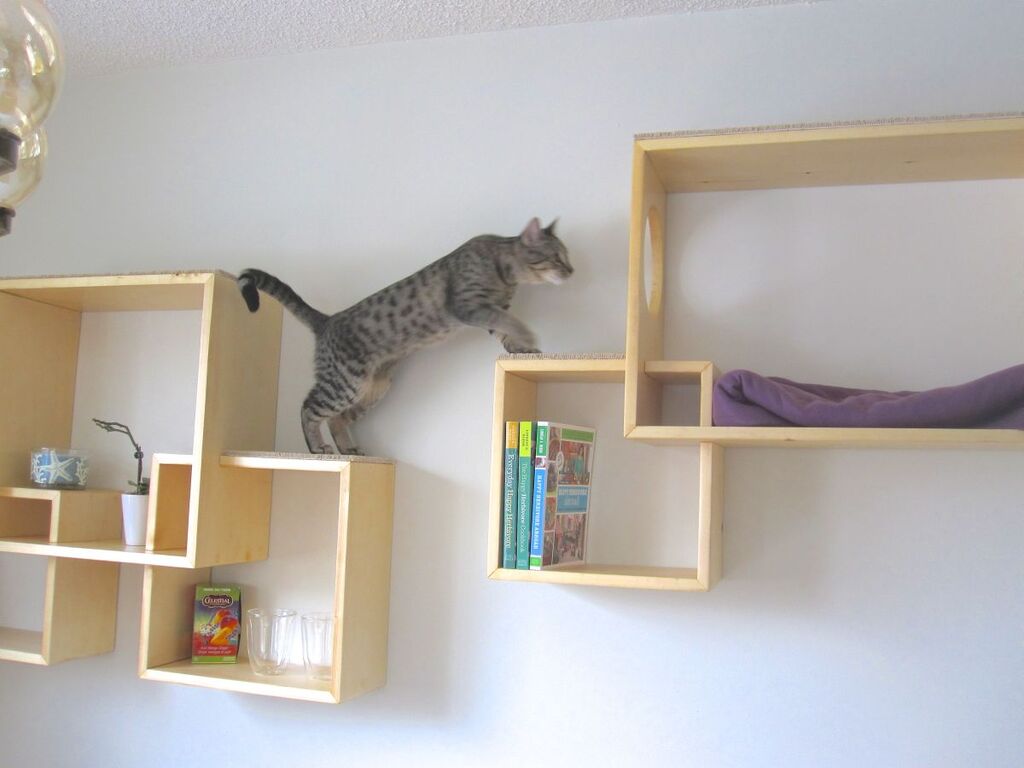
Dedicate a corner of your room to your cat’s activities. This can include a beautiful, modern cat tree that complements your decor, along with a matching scratching post. There are many designer cat furniture options available that serve as both a functional space for your cat and a statement piece for your home. Place a plush cat bed or a hammock in this area to provide a comfortable lounging spot.
Incorporate Wall-Mounted Shelves and Perches
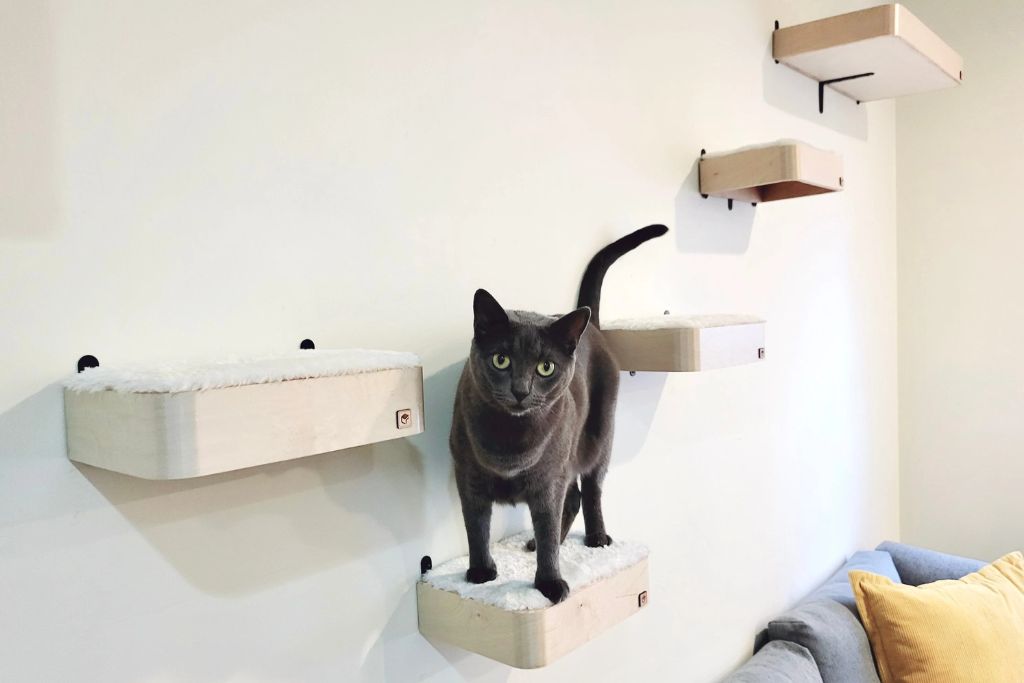
Cats love to climb and observe their surroundings from a high vantage point. Installing wall-mounted shelves can create a vertical playground for your cat without taking up floor space. These shelves can be arranged in a staggered pattern to allow your cat to jump from one level to another. Choose finishes and colors that match your wall or furniture to seamlessly integrate them into your home decor.
Use Decorative Storage to Hide Cat Essentials
Keep your cat’s toys, grooming tools, and treats organized in decorative baskets or boxes that match your room’s aesthetic. This not only helps declutter your space but also makes these items easily accessible. A stylish cabinet can also serve as a hidden litter box enclosure, reducing odors and keeping the litter box out of sight while still accessible to your cat.
Integrate Scratch-Resistant Surfaces Creatively
Incorporate scratch-resistant surfaces or panels into your furniture where your cat is most likely to scratch. This could be the sides of a custom-made bookshelf or the legs of a table. Some materials, like sisal fabric, can be wrapped around these areas to provide a safe and appealing scratching surface for your cat.
Decorative Yet Functional Cat Doors
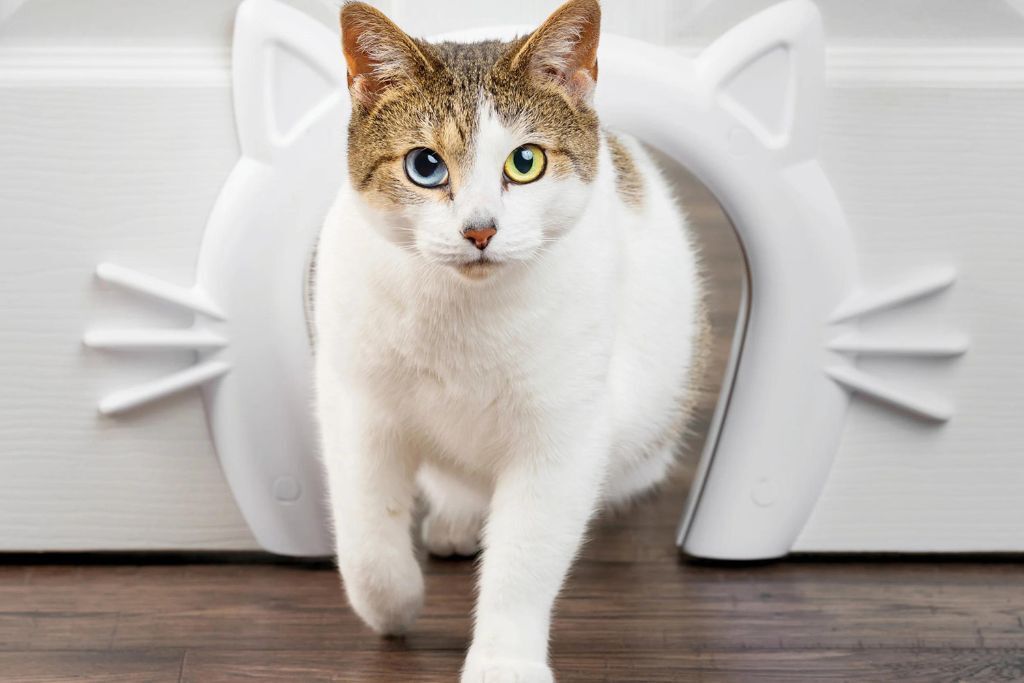
If your home layout requires cat doors to allow access to different rooms or outdoor areas, consider installing decorative cat doors that blend with your interior design. There are various designs available that can complement your home’s style, from classic to modern.
Conclusion
In conclusion, creating a pet-friendly home isn’t just about aesthetics; it’s a commitment to the safety, comfort, and enrichment of our beloved companions. By prioritizing safety measures, providing comfortable resting areas, and incorporating enrichment opportunities, we create a space where our pets thrive physically and emotionally. Integrating these principles into our living spaces ensures a harmonious and joyful coexistence for both pets and their human companions.
Explore more :









